Top 10 Leaves Name List Used As Medicine Leaves In Ayurveda
Ayurveda is a practice of traditional medicine hereditary to India; it has been adopted for thousands of years in different parts of India. The “Sushruta Samhita” and the “Charaka Samhita” are manuscripts that have described the works on conventional medicine during this period.
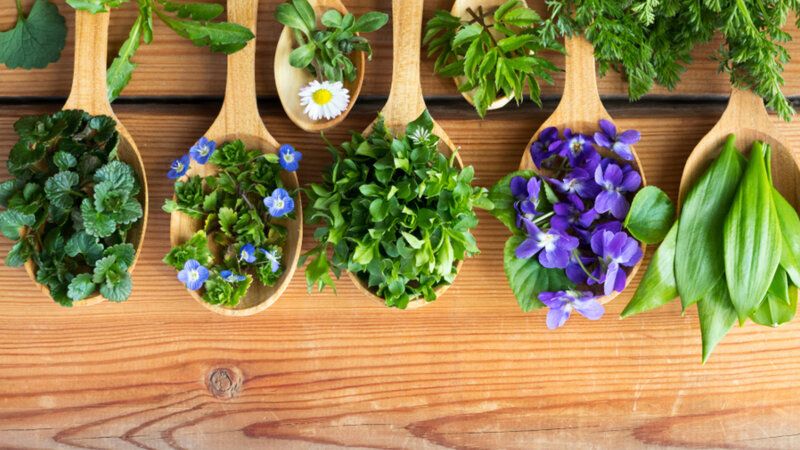
Ayurvedic practitioners also claim to include and recognize a number of therapeutic preparations and surgical techniques for curing various illnesses and diseases. In Ayurveda plant leaves or so-called medicine leaves of herbs are divided and merged as per their properties and functions.
This characterization makes it ready for herbal medicines and is recommended for various ailments and wellness. Some of these herbs can be fully grown in gardens, while several are very scarce and expensive. Below are the leaves name list and medicinal leaves names of herbs that are most used in Ayurveda.
1. Tulsi Leaf (Holy Basil)
Most familiar as “Holy Basil,” a holy plant is grown in a pot and is found in most Hindu families in India. A Hindu believes that if the Tulsi plant is grown around the house it fulfills the desire
It also keeps you healthy and helps to purify the air inside your house. Today in the modern world belief has become the truth, as several Indian scientists and researchers have stated that Tulsi has pharmacological effects.
The properties of the tulsi plant help to boost the immune system, central nervous system, reproductive system, gastric system, cardiovascular system, blood biochemistry, and urinary system.
Besides this tulsi leaves also have Adaptogens properties, an anti-stress agent that helps the mind to stay relaxed and calm.
2. Tejpatta (Bay Leaves)
The most commonly used culinary herb in soups, stews, meat, seafood, and vegetable dishes. It is commonly known as “Tejpatta” in Hindi, and “Tamal Patr” in Gujarati the leaves are mainly used whole and removed ahead of serving.
It is often used in rich spicy recipes and as an element in garam masala, a blend of ground spices. Countless properties have been claimed for this herb.
In Ayurveda, bay leaves are used in teas to improve and soothe respiratory problems and indigestion. Besides this, Bay leaves are traditionally used to lose weight as well as for digestive disorders such as bloating, indigestion, and gas. Bay leaf has also been used as an herbal medicine for headaches.
The properties in Bay leaf have as well been shown to help the body process insulin, which aids to lower blood sugar levels.
3. Neem Leaves (Azadirachta indica)
Another bitter taste plant leaves that work miracles from inside as well as out. Neem is an herb that extensively used in Ayurvedic medicines for thousands of years.
It is a plant whose leaves, stem bark, root bark, flower, seed oil as well as seeds have various medicinal purposes. It has anti-fungal, antiseptic, anti-inflammatory, anti-viral, and anti-bacterial properties meaning all are one performer for health benefits.
Neem leaf pastes are externally used for injuries, ulcers, and for the majority, all skin diseases such as rashes, beehive eczema, ringworm, acne, lice, etc.
Internally, drinking the extract of neem leaves can be a powerful blood purifier, besides this, it has an anti-parasitic effect that helps to kill off those unwanted worms.
It Is also used as the most common ayurvedic medicine for diabetes that helps to lower blood glucose levels.
4. Dhania (Coriander Leaves)
It is a popular herb known as “dhania” in India, which is extensively used in different cuisines to flavor stir-fries, curries, breakfast, snack items, and more. In some parts around the world, it is known as “cilantro” which is mostly used for garnish.
It is important to know that garnish not only gives food a flavor but also has many health benefits. The foremost benefits of Coriander leaves are that it benefits from digestive-related problem, due to its antibiotics properties.
The ailments such as diarrhea can easily be managed, which is caused by pathogen bacteria. Coriander Leaf is very effective in dealing with it due to its properties called “borneol” an element substance that can remove E.coli bacteria.
The antibiotics in coriander leaves also help to overcome various health problems such as measles, gastric inflammation, dizziness, flu, high blood pressure, hemorrhoids, vomiting, impotence, and breast inflammation.
5. Nirgundi Leaves (Vitex negundo)
Nirgundi is scientifically known as “Vitex Negundo” and popularly known as the five-leaved chaste. As a tree, it has its own importance in Ayurveda as well as the Siddha and Unani system of medicine for its medicinal value.
The word “Nirgundi in Sanskrit literally means, protects the body from all ailments. The medicine leaves of the Nirgundi plant have analgesic properties that can be very beneficial in various ailments such as Low Back Pain, Joint Disorder, Rheumatoid Arthritis (Amavata), Sciatica, Spondylosis, Osteoarthritis, etc.
The oil prepared from the leaves can be applied externally; the other way is by heating a leaf and plastering it around a pain such as rheumatoid arthritis pain or sprains.
6. Podina (Peppermint Leaves)
Everyone knows “Peppermint” has a strong sweetish odor with a warm aromatic taste with a cooling effect. Peppermint herb is also known as “Pudina” in Sanskrit and “water mint” and “spearmint” in English.
According to Ayurveda, peppermint has a cooling and heating effect (virya) with a sweet pungent taste (rasa). Due to these properties, it benefits the nervous system, blood, and plasma tissues (dhatu).
Consuming Peppermint stimulates the circulatory, nervous, digestive, and respiratory channels (srotas). Besides this, Peppermints have powerful antibacterial property that aids in fighting against unhealthy bacteria like e.coli, staph, and salmonella.
7. Patharchur (Bryophyllum pinnatum)
It is one of the important plants, which is most commonly used for kidney stones. It is also known as “Patharchur,” Pashan Bheda, a life plant, katakataka, a miracle leaf, etc. Besides Bryophyllum pinnatum known for treating kidney problems and urinary disorders, it is moreover, used in many ailments.
Bryophyllum leaf juice mixed with honey can be beneficial to treat asthma and cough, a dose of 5-10 ml is advisable. Due to its antimicrobial properties, it is also helpful in treating fungal infections such as Bacillus subtilis, Enterococcus faecalis, Candida albicans, albicans, Staphylococcus aureus, etc.
The Juice of Patharchur leaf if taken in doses of 10-15 ml regularly can help to control bleeding piles as well as blood-mixed diarrhea.
8. Gheekumari (Aloe Vera)
Aloe Vera is known as ‘Kumari’ in Sanskrit means “young girl”; it is a widely used herb in Ayurveda. Aloe Vera is used as a remedy for many ailments; it is used internally as well as externally.
According to Ayurveda Aloe, Vera is bitter in taste, which balances all three doshas, and is cold in potency. It has many medicinal properties such as antioxidant properties, which are helpful in maintaining a healthy structure of the blood vessels and also vital in diabetic care.
It is in addition used for menstrual problems as well as various skin problems. It is also a well-known herb that is widely used in the treatment of bleeding disorders, constipation, wound healing, the strong immune system, and diseases due to Pitta aggravation.
9. Curry leaves (Murraya koenigii)
A vital spice ingredient of Indian cooking that adds flavor and aroma to the cooking. Besides flavoring, the Curry leaf is known for its variety of healing properties.
It is due to its multiple properties in it such as vitamin A, vitamin B, vitamin C, vitamin B2, iron, magnesium, copper, calcium, etc.
Consuming curry leaves helps to stimulate digestive enzymes and helps to break down food more easily. Curry leaves are also helpful in treating morning sickness during pregnancy.
To get relief from morning sickness, take 10-15 curry leaves to make juice of it, add two teaspoons of lemon juice, and one teaspoon of sugar mix well, and consume in the morning.
Curry leaves are also known to improve eyesight and other eyes-related problems such as the development of cataracts. It is effective due to its antioxidant properties and its richness in vitamin A.
10. Gandhatrina (Lemongrass)
Along with leaves grass also known as fever grass and gavati chaha in Marathi have its importance in Ayurvedic medicine.
It has been used for thousands of years in India and other Southeast Asian countries to treat a wide variety of ailments.
Lemongrass is loaded with nutritional values like vitamins A and C, folic acid, folate, zinc, magnesium, iron, potassium, copper, manganese, calcium, and phosphorus.
The properties of lemongrass help to fight against free radicals, an atom that can develop health problems, including heart disease.
The other health benefits of lemongrass are it provides relief from stomach disorders, respiratory disorders, insomnia, aches, fever, rheumatism, edema, infections, etc.
The antioxidant properties of lemongrass also help in maintaining cholesterol levels and reduce belly fat, nervous system, cellular health, healthy skin, and immune system.
Leaves Name List Used As Medicine
Leaves from various plants are commonly used in traditional medicine for their medicinal properties. Here is a list of some leaves that are used in traditional medicine:
1. Neem leaves (Azadirachta indica): Neem leaves have antimicrobial, antifungal, and anti-inflammatory properties. They are used to treat various skin conditions, such as acne, eczema, and psoriasis.
2. Tulsi leaves (Ocimum sanctum): Also known as holy basil, tulsi leaves are used in Ayurvedic medicine for their antioxidant, antimicrobial, and anti-inflammatory properties. They are believed to boost immunity, treat respiratory problems, and promote general well-being.
3. Peppermint leaves (Mentha piperita): Peppermint leaves contain menthol, which has analgesic and soothing properties. They are used to relieve digestive issues, such as indigestion, bloating, and nausea.
4. Eucalyptus leaves (Eucalyptus globulus): Eucalyptus leaves contain essential oils with expectorant and decongestant properties. They are often used in steam inhalation or chest rubs to alleviate respiratory congestion and treat coughs and colds.
5. Aloe vera leaves (Aloe vera): Aloe vera leaves contain a gel that has soothing and healing properties. They are used topically to treat burns, wounds, and skin irritations.
6. Curry leaves (Murraya koenigii): Curry leaves are rich in antioxidants and have anti-inflammatory properties. They are used in traditional medicine to treat digestive disorders, promote hair growth, and manage diabetes.
7. Guava leaves (Psidium guajava): Guava leaves have antibacterial and anti-inflammatory properties. They are used as a natural remedy for diarrhea, sore throat, and dental problems.
8. Gotu kola leaves (Centella Asiatica): Gotu kola leaves have been used in traditional medicine for their potential cognitive and memory-enhancing properties. They are also used topically to promote wound healing.
9. Moringa leaves (Moringa oleifera): Moringa leaves are highly nutritious and rich in vitamins, minerals, and antioxidants. They are used to boost energy, support immune function, and promote overall health.
10. Ginkgo biloba leaves: Ginkgo biloba leaves are known for their potential cognitive benefits. They are often used in herbal supplements to improve memory, concentration, and circulation.
Please note that while these leaves have been traditionally used in herbal medicine, it’s important to consult a healthcare professional or a trained herbalist before using them for medicinal purposes, as they can interact with medications and may not be suitable for everyone.
Tips and Tricks for using medicine leaf
Instead of preserving all the leaves of herbs you harvest, you should use fresh herbs from the garden. Before using in food or medicine take off dirt and insects; wash the leaves and stem gently by immersion into cold water.
Uses a sink basin or large bowl so that you can wash it properly. Harvesting ayurvedic herbs at home means taking a small portion of the plant for use and not the entire plant.
Make sure that you do not trim more than one-third of the plant when you harvest. Trimming will promote new growth, but the remaining leave is necessary so that it can make food for the entire plant.
Different herbs have distinct uses and harvesting methods or conservation methods. Know herbs in your home garden and find the foremost ways to harvest and preserve each. So that you get the best flavors, aromas, colors of your herbs beside medicinal use.

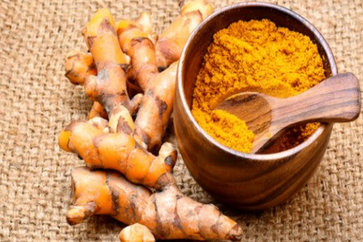

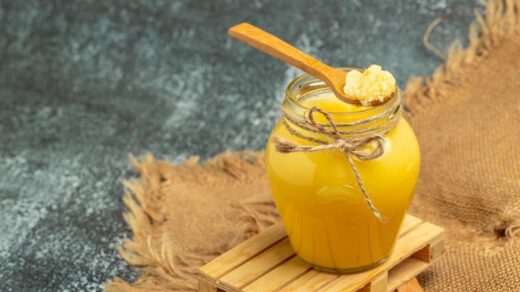


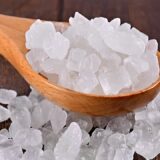



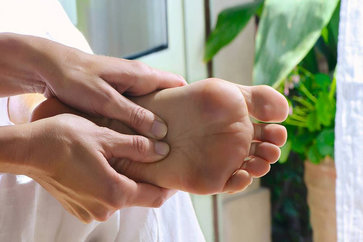















This is a very good post. I’ve been searching for different traditional medicines I could used till I found your article. This is awesome. I will sure try some of it soon. It’s a big help for me. Thanks for sharing it.
Adhatoda vasica a herb with unique properties can help the entire respiratory system, and its bronchial function. It’s leaves, flowers and root can be used as Ayurvedic medicine for the treatment of chest congestion and inflammation.
In ancient times, monks and physicians grew gardens specifically full of healing herbs called Physics. A physic garden is a place where plants with medicinal properties grow.
Herbal medicine, also known under the names of phytotherapy and herbalism, is a well-defined branch of the ancient alternative medicinal system that involves the use of plants
If you suffer from ailments such as colds and even cough and you think conventional medicines are not right for you then you should try some herbal medicines.